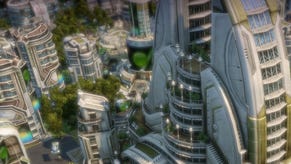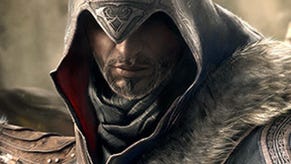Face-Off: Driver: San Francisco
Shift happens.
The notion that the developer is running a 60FPS engine while at the same time decoding video is quite remarkable - we've seen FMV used in this way before (TV screens in Alan Wake and The Darkness map the FMV to a texture) but we've never seen a level of integration this close before. The Bink codec is used here for the FMV elements, but as it is utilised mostly for talking heads, video quality holds up rather well. Only on the "Previously in Driver: San Francisco" recaps does the image take a noticeable hit in quality.
Based on our captures it appears to be the case that all the video elements are identical between the PS3 and Xbox 360 versions of the game, with the exact same data being utilised. While we would have liked to have seen the weaker video elements mastered to a higher quality on PS3, we really can't be too fussy here. Bearing in mind that Bink is also used for the in-game talking heads that pop up mid-mission, we must assume that the video decoder is lightning-fast and light on RAM - obviously it works out to be less of an impact on processing power than rendering the characters natively.

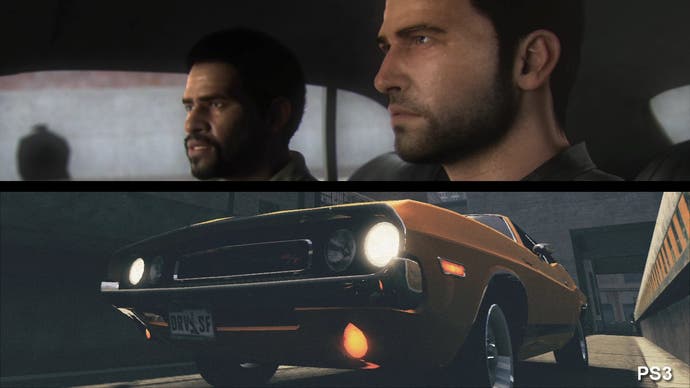
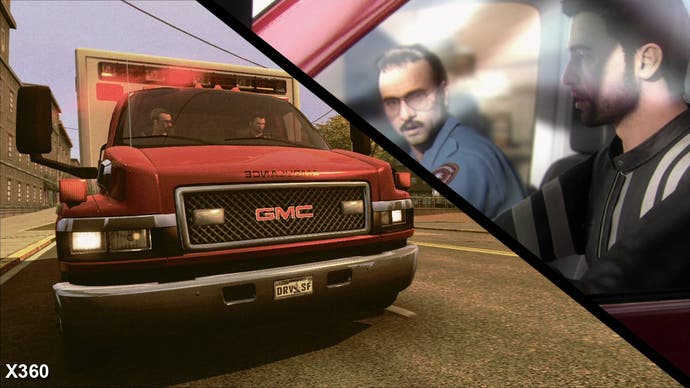
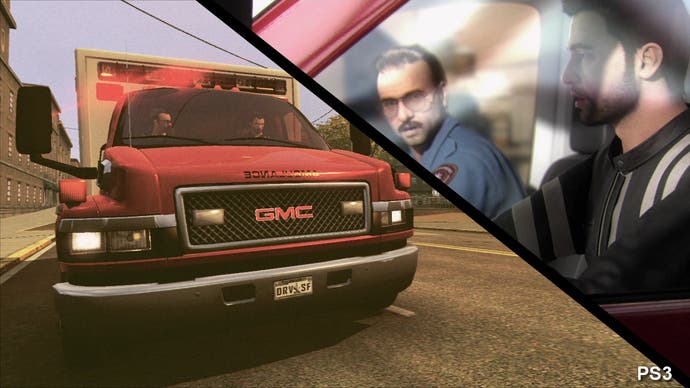
Another element where Driver: San Francisco deserves praise is in its attempts to load game assets seamlessly. Only at the beginning of the game do loading screens intrude on the action. Missions are preceded by talking heads that keep you entertained while the actual gameplay streams in the background, and only by skipping them do you need to wait.
The streaming tech is really impressive - the Shift mechanic is seamless, you feel that you have instant access to any part of the city, and any vehicle (all of them officially licensed and nicely modelled). One of the engine-driven cut-scenes has Tanner looking to convince his partner of his Shifting prowess, resulting in the action moving swiftly from location to location, cut-scene to cut-scene with no visible loading - this sequence is included in the like-for-like performance analysis.
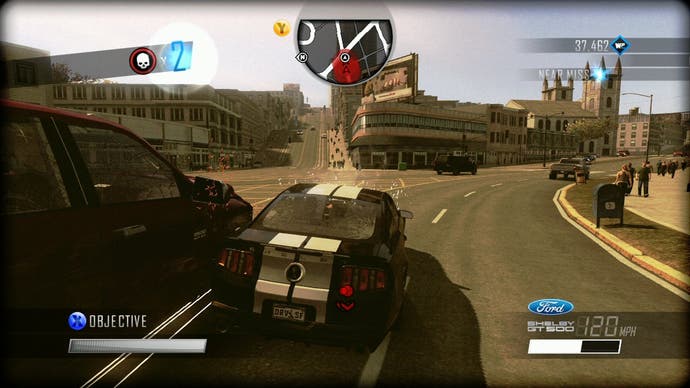

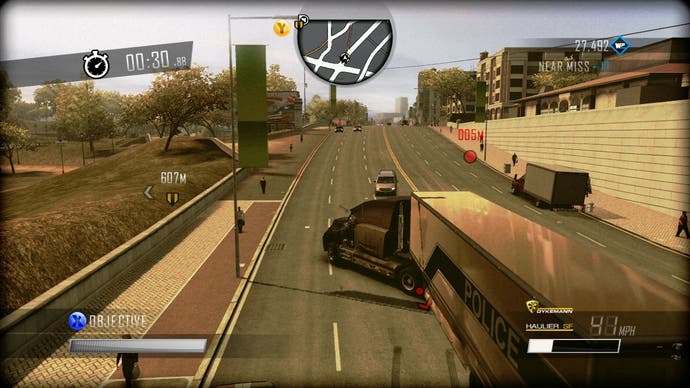
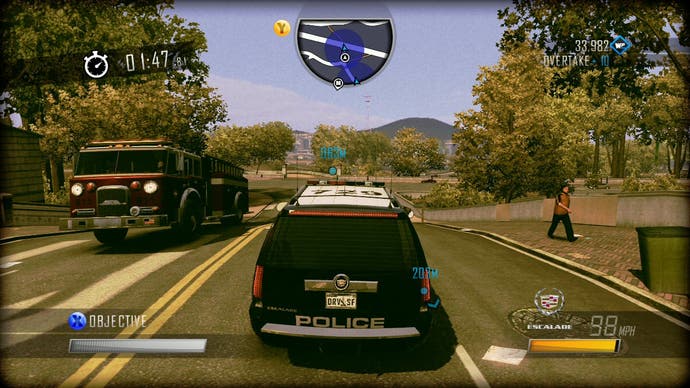
Cars and environmental detail appearing from nowhere is only really evident during the fast-moving "god view" Shifting, while in-game there is no noticeable pop-in whatsoever, no fogging and a full draw distance producing a very solid, involving look to the game with few visual artifacts. Just about the only noticeable compromise we found (aside from the frame rate dips and screen-tear) was the somewhat harsh transitions in LODs on the vehicles, which can occur fairly close to the player.
Other technical elements deserving of praise include the handling model. Heavy US muscle cars, including Tanner's Dodge Challenger, feel the part but the game also includes a wealth of vehicles from a wide range of marques - the diversity in manufacturers feels rather more cosmopolitan than the real life San Francisco, in fact. A full range of vehicles from super-minis to supercars, with vans, emergency vehicles and trucks to boot also ensures a wealth of diversity in the way the game plays - something the mission structure exploits very effectively. Towing vehicles also make for some lovely physics-based fun in some of the missions too.
In a recent Eurogamer interview, Reflections' Martin Edmondson talked about the extra year of development time that Driver: San Francisco enjoyed, and how it meant that features which were mooted for DLC releases - such as split-screen - ended up in the retail product. As it is, split-screen does the job well enough but does rely on the game running at half the frame rate, which makes for an interesting exercise in how the Driver handling model may have felt if Reflections hadn't targeted the optimal 60 frames per second. On a more general level, Driver: San Francisco really feels as though that extra year's worth of development time has paid off - the features are well realised, enjoyable and polished.

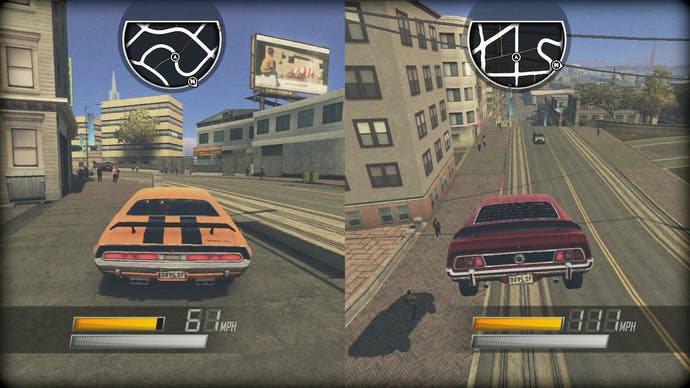
In summary, Driver: San Francisco is a superb game that truly delivers on both the current generation console formats and a title we'd unreservedly recommend regardless of whether you're playing on Xbox 360 or PlayStation 3. Each version has its plus and minus points: Xbox 360 has a noticeably higher image quality which we put down to a more refined post-process anti-aliasing solution, and in some places there are fewer frame rate drops and torn frames.
For its part, while the PS3 version does look a little rougher it does seem to plough through more stressful gameplay areas with fewer impacts to performance - perhaps suggesting an edge in terms of how physics are handled. The question is to what extent the gameplay experience is affected: in this regard, neither version is 100 per cent perfect, but in our view, PS3 edges it.
Of course, what we are missing from this piece is analysis of the PC version, which we hope to take a look at closer to release. We'd like to see hardware anti-aliasing support, improved shadows covering more in-game objects, less noticeable LOD popping and more refined lighting. In an ideal world we'd love to see increased geometry and higher quality textures for a more detailed cityscape, but that's probably a wish too far.






